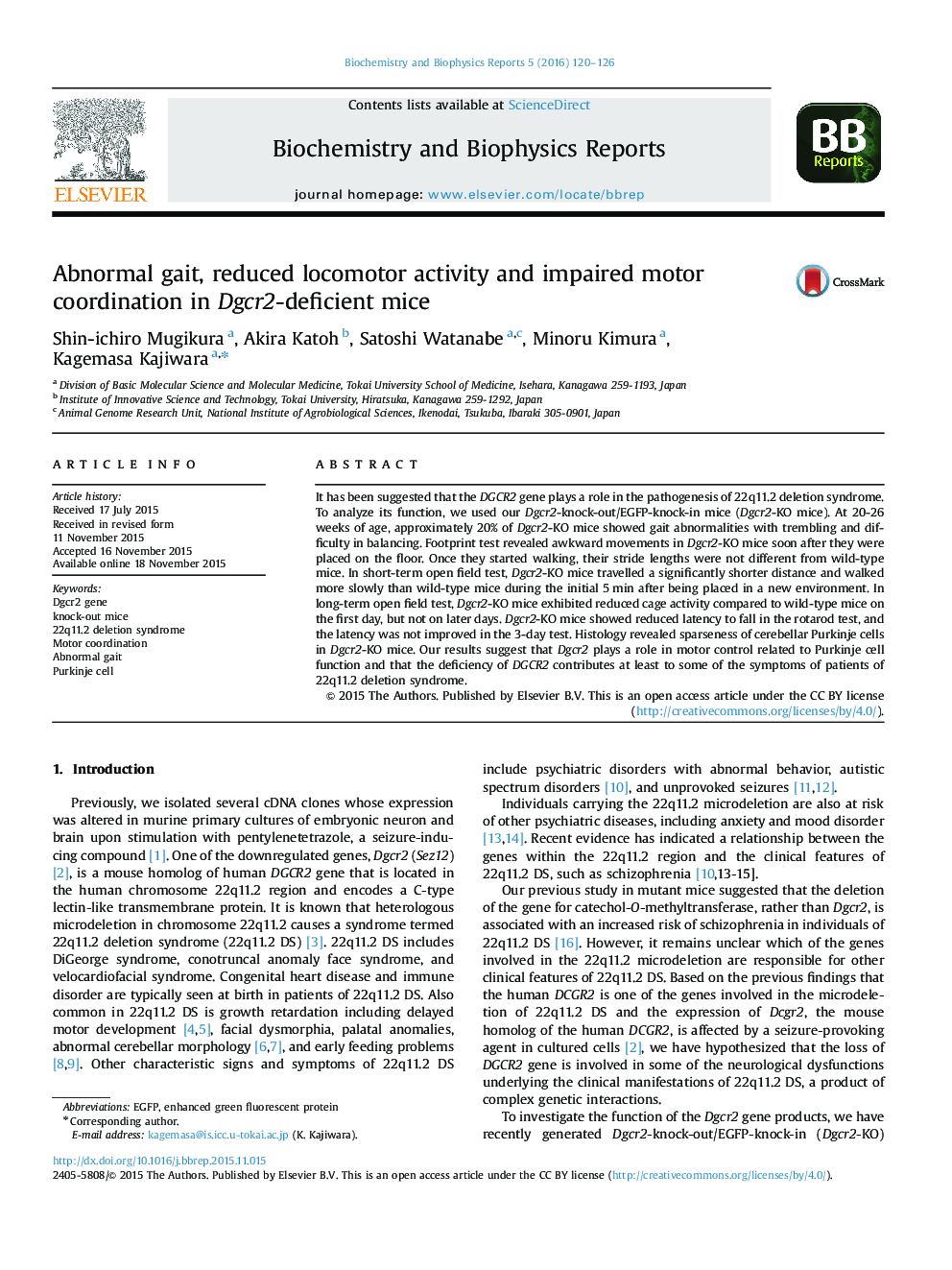| Article ID | Journal | Published Year | Pages | File Type |
|---|---|---|---|---|
| 1941710 | Biochemistry and Biophysics Reports | 2016 | 7 Pages |
•Dgcr2-KO mice showed abnormal behavior and gaits in footprint analysis.•Locomotor activity was significantly reduced in Dgcr2-KO mice in open field tests.•Dgcr2-KO mice showed impaired motor coordination in the rotarod test.•Dgcr2-KO mice had sparseness of cerebellar Purkinje cells.•Loss of DGCR2 may contribute to neuronal dysfunction in humans.
It has been suggested that the DGCR2 gene plays a role in the pathogenesis of 22q11.2 deletion syndrome. To analyze its function, we used our Dgcr2-knock-out/EGFP-knock-in mice (Dgcr2-KO mice). At 20-26 weeks of age, approximately 20% of Dgcr2-KO mice showed gait abnormalities with trembling and difficulty in balancing. Footprint test revealed awkward movements in Dgcr2-KO mice soon after they were placed on the floor. Once they started walking, their stride lengths were not different from wild-type mice. In short-term open field test, Dgcr2-KO mice travelled a significantly shorter distance and walked more slowly than wild-type mice during the initial 5 min after being placed in a new environment. In long-term open field test, Dgcr2-KO mice exhibited reduced cage activity compared to wild-type mice on the first day, but not on later days. Dgcr2-KO mice showed reduced latency to fall in the rotarod test, and the latency was not improved in the 3-day test. Histology revealed sparseness of cerebellar Purkinje cells in Dgcr2-KO mice. Our results suggest that Dgcr2 plays a role in motor control related to Purkinje cell function and that the deficiency of DGCR2 contributes at least to some of the symptoms of patients of 22q11.2 deletion syndrome.
